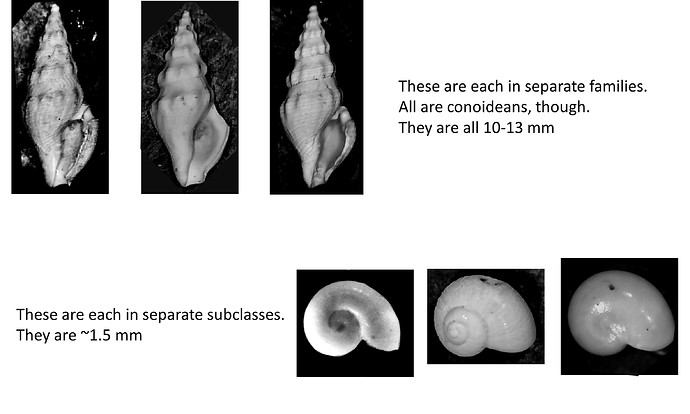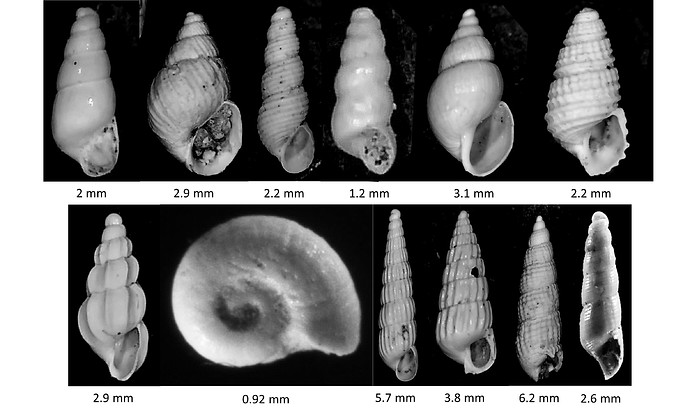That issue also turns up for mollusks. The first picture illustrates semi-superficially similar species. The second shows a variety of marginelliform gastropods (three closely related families) scaled to 4X life size. Each picture on the slide is a different species (21 of them undescribed) The third shows a variety of fossil members of the incredibly diverse (probably ~5,000 species globally, but no one really knows for sure) ectoparasitic family Pyramidellidae (most of these species are undescribed).


